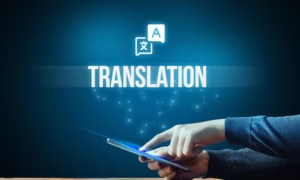Every year an alarming number of children go missing in the United States. As per the report from FBI, around 840,000 individuals are reported missing annually, and the majority of those cases revolve around children. These figures present a stark reality: the need for advanced solutions to ensure the safety of our children has never been a more pressing issue. Fortunately, the rapid advancement of artificial intelligence (AI) and GPS technologies provide a new frontier in protecting children from the ever-present danger of abduction.
Role of Technology in Child Safety
Technological innovation has become a lifeline for parents, providing tools that help track and monitor their children’s whereabouts in real-time. GPS tracking systems have evolved significantly over the years, moving beyond simple location tracking to offering valuable insights into movement patterns and behavior. When combined with AI capabilities, these systems can provide predictive safety alerts that help parents to identify and act upon potential; threats before they escalate.
Children spend time in multiple places- schools, parks, and at their friend’s homes. Sometimes, parents may not be physically present to ensure their safety. Advanced GPS and AI-powered tools provide a practical solution for parents who need real-time updates on their children’s location and activities, providing the ability to respond instantly if something is amiss or not right.
The Power of GPS in Location Tracking
GPS technology has come a long way since its inception. While early GPS devices provided basic location services, today’s systems are far more advanced, providing features that ensure the safety of a child. Modern GPS devices, like those integrated within smartphones or wearable devices, enable parents to set up “geofencing” perimeters- virtual boundaries around safe zones such as homes, schools, or local parks. If a child crosses the boundary of these zones, parents can get an immediate notification. The geofencing capability is crucial in the prevention of abductions. Usually, the window of time in which a child can be taken is very short, so the faster parents are alerted, the higher the chances of intervention. AI’s ability to evaluate trends in behavior can help detect any unusual activity, such as if a child were to enter an unfamiliar area or showcase behavior patterns that are inconsistent with their regular routine. By using AI’s predictive analysis, parents can quickly respond to red flags. GPS technologies offer that immediate alert, which could be the difference between a close call and a tragic outcome.

Source- Mike Bird
How AI Improves Child Safety
While GPS tracks location, AI adds another layer of protection by making sense of the data gathered. AI algorithms are advanced and can easily detect patterns and abnormalities that indicate a threat, assisting parents to take proactive steps to ensure their child’s safety. For instance, AI can learn a child’s usual routine- such as the route they take to school- and alert parents if the child deviates from that pattern without any explanation.
The instant alert capabilities of GPS and AI-powered systems enable a faster response to potentially dangerous situations. Real-time notifications help parents or guardians act immediately, decreasing the window of vulnerability. In the case of geofencing alerts, parents can get messages when a child crosses the boundaries of safe zones, enabling them to check in quickly to ensure everything is okay.
Furthermore, many of these systems provide communication features that bridge the gap between location tracking and direct contact. Children can easily send distress alerts or communicate directly with their parents to provide guidance or support if their child feels unsafe.
Tools such as BoT Talk combines GPS with AI, and are effective at offering a predictive edge. A’’s ability to evaluate trends in behaviour can help detect unusual activity, such as if a child were to enter an unfamiliar area or showcase patterns that are inconsistent with their regular routine, By using AI’s predictive analysis. Parents can quickly take action to safeguard their children.

Source- Andrea Piacquadio
Moving Beyond Traditional Safety Methods
While traditional methods such as teaching children about “stranger danger” are still crucial, they are no longer enough on their own. However, with the rapid pace of life, these methods alone are no longer enough to address the complexity of potential threats today. The unpredictability of the modern world implies that parents need a blend of technology and vigilance in order to keep their children safe. AI and GPS technologies offer parents a proactive solution providing real-time insights alerts, and communication capabilities that can create all the difference in preventing abductions.
As AI and GPS technologies continue to advance, we are more than likely to see even more sophisticated solutions in the field of child safety. Future innovations may consist of predictive systems that account for larger datasets to better detect unusual behaviors or dangerous situations. Improved machine learning algorithms can provide deep insights into each child’s unique habits, providing even more precise alerts for when things are out of the ordinary. Companies such as BoT Talk are pioneering such solutions and focus on creating safety technologies that are natural and accessible for families. The goal is to provide systems that protect children without infringing on their independence.





























